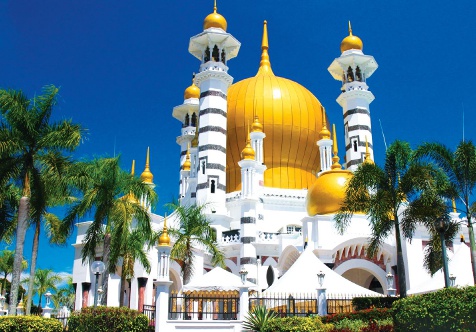In collaboration with Convergence, VOICE OF ASIA is proud to present timeless articles from the archives, reproduced digitally for your reading pleasure. Originally published in Convergence Volume 12 in 2012, we present this story on Perak, Penisular Malaysia’s second-largest state with plenty of its own culture and history to discover.
Perak, also known by its Arabic honorific ‘Darul Ridzuan’ (The Land of Grace), is Peninsular Malaysia’s second-largest state. Bordering Kedah and Yala Province of Thailand to the north, Penang to the northwest, Kelantan and Pahang to the east, and Selangor to the south and west, Perak draws upon these myriad cultural influences to enhance its own rich heritage.
In the Malay language, Perak means ‘silver’, and conjures a vision of treasures under the earth, one of which is tin.During the time of the British colonisation, the state was the richest source of this metal in the country and thus the world. Its history began with the decline of the Melaka Sultanate in 1528 when the eldest son of the then-reigning Sultan of Melaka, Raja Muzaffar Shah, built his own empire on the banks of the Perak River. Subsequent colonisation by the British in 1820 saw Perak becoming a leading source of tin-ore in the region.
Today, Perak is better known for its other natural resources. A tropical dream, its lush jungles and unspoiled rainforests contribute to its rolling verdant landscape, seducing visitors with its variegated flora and fauna.
Perak is accessible via road, rail or by air. Those preferring the convenience of the latter can hop on a flight to the Sultan Azlan Shah Airport, located in its capital, Ipoh, while regular trains depart from KL Sentral and stop off at many of the major towns in Perak.
If you have the time though, a leisurely drive will allow you to visit the state’s many unique sites and experience the varied charms of Perak. While you can reach different parts of Perak via the non-tolled trunk roads, for ease of travel and safety, it perhaps best to use the North-South Expressway, which plies from Kuala Lumpur to Perak and from Penang to Perak and vice versa, or the Kampung Raja to Simpang Pulai route, if you are coming from Pahang.
Nature’s Bounties
Those visiting Perak will be astounded by its impressive limestone backdrops. The scenic limestone hills of Perak conceal a veritable honeycomb of caverns, many of which are home to breathtaking rock formations and extensive galleries of stalagmites and stalactites. A large number of these caves also house Chinese temples and other places of worship.
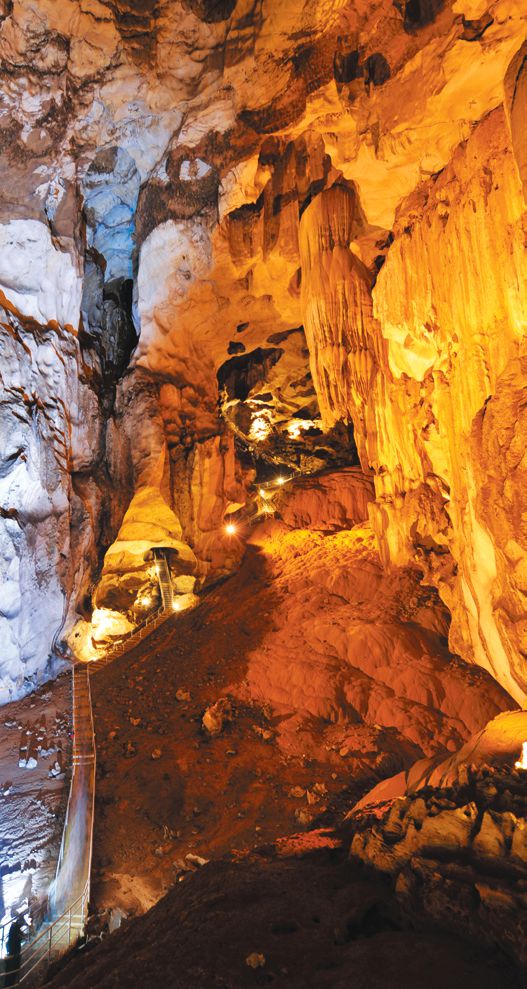
Gua Tempurung (Tempurung Cave) is part of this immense limestone massif, boasting wondrous speleotherms such as rim stone pools, calcite crystals and marble columns in addition to stalagmites and stalactites of various heights and dimensions.
Existing since 8000 B.C., the cave, measuring 1.9 km in length and 120 meters in height, is the largest natural limestone structure in Peninsular Malaysia.
For a more mystical experience flavoured with a kiss of the Orient, the Sam Poh Tong temple in Gunung Rapat (Rapat Mountain) is a popular tourist attraction. Also famous among locals, the temple sees large numbers of visitors flock to its gates during popular religious festivals. Arguably the largest cave temple in Malaysia, it is also an aesthetic marvel, ornamented with multiple statues of the Buddha set amidst its natural rock outcroppings. Also known as the Cavern of Triple Gems, the cave’s walls are tapestried with paintings of Taoist and Buddhist deities as idols of Chinese gods sit in silent benediction, interspersed among the stalactites and stalagmites.
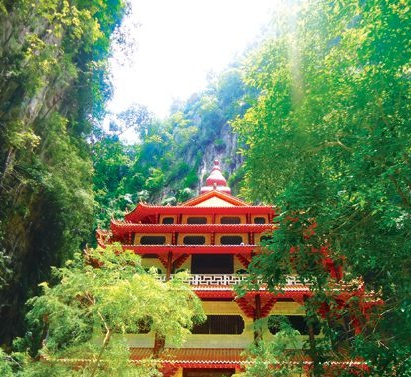
Geological formations are not the only natural wonders that Perak has. In the northern most part of the state lies the Belum Forest Reserve – a vast area of unspoiled flora-and-fauna and one of the largest virgin jungle reserves in Peninsular Malaysia.
Bordering Thailand, the rainforest boasts trees that are more than 130 million years old, and is home to a number of exotic, endangered species which include the Sumatran Rhino, the Malayan tapir, the white-handed gibbon and the Asiatic Elephant among others. In addition, Belum also houses the man-made Temenggor Lake which, set against a picturesque jungle backdrop, is a popular spot for fishing and nature enthusiasts.

Another place to take in the wonders of Mother Nature is the Tambun Hot Springs, which is the perfect place to rejuvenate one’s body and spirit, and luxuriate in pools of mineral spring water. Daily, natural geothermal hot springs percolate 3 million litres of thermal water from the ground in Tambun into the park’s hot springs and spa. Averaging a temperature of 40 to 50 degrees Celcius, the four pools at Tambun contain a wealth of minerals such as sodium, magnesium, potassium, iron and sulphur, reputed to cure a range of nerve and skin problems.
Cultural Splendours
Perak’s rich culture and heritage is a combination of British, Moorish and local elements, marrying the Occident and the Orient in eclectic harmony. Traces of its multicultural persona are evidenced in its stunning architecture, of which the Ipoh Railway Station and City Hall are foremost examples. Known affectionately to the locals as the Taj Mahal of Ipoh, the former, with its amalgamation of Victorian, Moorish and Rajasthani influences and unique design, was featured in the 1999 Hollywood remake of Anna and the King.
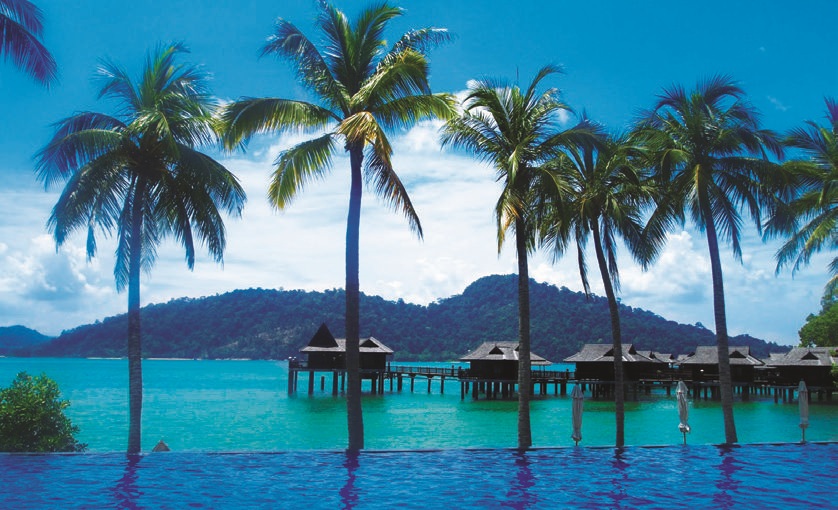
The State Mosque, situated across from the Railway Station is an architectural masterpiece in its own right, boasting a 38m high minaret and domes decorated with thousands of mosaic tiles. Those wishing to sample Perak’s eclectic history can visit the Darul Ridzuan Museum for a full chronicling of the state’s development, from the time of the tin-ore boom to the present day. For those attracted to natural wonders, the Geological Museum offers exhibits of tin-ore as well as an extensive collection of precious stones, fossils and rock specimens.
Other buildings of historical and cultural interest can also be found outside of the state capital. For instance, in the southern town of Teluk Intan is a monument that is the local equivalent of Italy’s Leaning Tower of Pisa. Also known as the Clock Tower of Teluk Intan, this unique structure bears a striking resemblance to a Chinese pagoda – a reflection of how Chinese migrants in the late 1800s brought their cultural influences to bear in their new home.
Kellie’s Castle – located near Batu Gajah – is another must-visit for visitors to the Silver State. Built by a Scottish planter, William Kellie Smith, in the 1900s, it took 10 years to build but was never completed. Comprising a labyrinthine structure with hidden rooms and secret passageways, the building retains an aura of grandeur despite outward signs of decay. Wandering through rooms fallen to neglect, one cannot help but imagine the castle in happier times. Sightings of ghosts have been reported both inside the castle and on its grounds, making the castle a worthwhile pit-stop for lovers of legends and folklore.
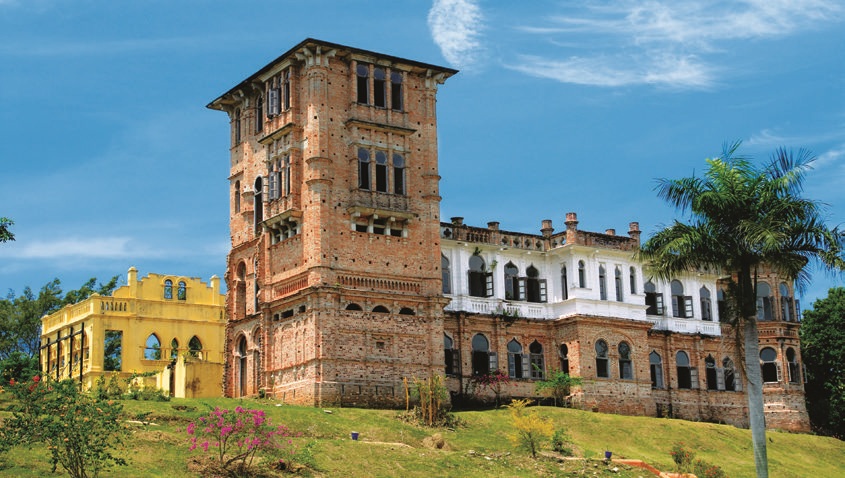
A Town of Firsts
For history buffs, the one place in Perak that is a must-visit, even more than the charming capital city of Ipoh, is Taiping. Located in the north-western part of the state, it got its name – which means “Great Peace” in Chinese – after a British-brokered peace agreement brought an end to fighting between two Chinese societies – the Hai San and the Ghee Hing.
From 1876 to 1937, it was the centre of British administration of Perak, before the state capital was moved to Ipoh. Today, Taiping is a quiet town – albeit the second largest in the state – which is a word away from how it was during its heyday. Nevertheless, more than a few elements of its past can still be seen, particularly in the form of Colonial-era style buildings which serve as shop houses in the town centre.
The Perak State Museum in Taiping is not only a great place to learn more about the state’s progress – from the heights of the tin-ore boom to the present day – but is a historical monument by itself, as it is the oldest museum in Malaysia. In fact, Taiping has the reputation of being home to many firsts in Malaysian history.
To illustrate, it is where tin mining first took place in Malaysia, where the first prison – Taiping Gaol – was built, the first library, first post and telegraph office, and the first English school. Taiping Railway Station is also the oldest in the country, and trains from there used to transport tin to Port Weld (which incidentally is also the first port in the country).
Taiping Zoo also has the honour of being the first of its kind in Malaysia. Set up in 1961, two years before the National Zoo in 1963, it still houses an impressive menagerie comprising 180 species of amphibians, mammals, reptiles and birds. It also plays host to the country’s first and only Night Safari, where visitors can watch nocturnal animals in their element.
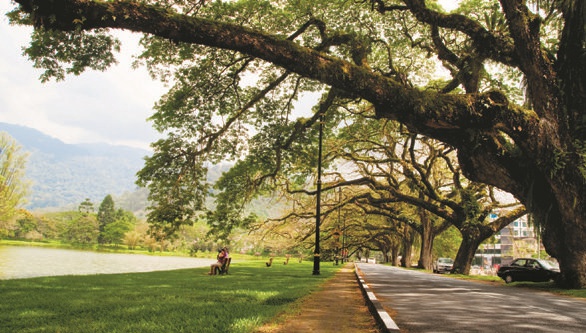
A point of interest, Taiping also has one of the wettest climates in Peninsular Malaysia, which contributes to its lush vegetation. Perhaps the best manifestation of its botanical splendours is the Taiping Lake Gardens. Constituting 222 acres of parkland, it is home to a multitude of horticultural marvels, including raintrees with branches that hang over the lake like a canopy. Arguably one of the most beautiful sites in Malaysia, the Taiping Lake Gardens is the perfect place to experience the magic of Mother Nature while relaxing in serene surroundings.
The Jewels of Perak
As an interesting aside, the state of Perak boasts some of the country’s most beautiful women, in addition to its stunning natural treasures. Ipoh-born Datuk Michelle Yeoh Choo-Keng, better known for her roles in the 1997 James Bond film Tomorrow Never Dies and the Academy Award-winning Crouching Tiger, Hidden Dragon was nominated by People Magazine as one of the ‘50 Most Beautiful People in the World’. Supermodel Amber Chia, who hails from the same city, is a brand ambassador for Guess watches and has lent her presence to the nation’s most glamorous fashion catwalks.
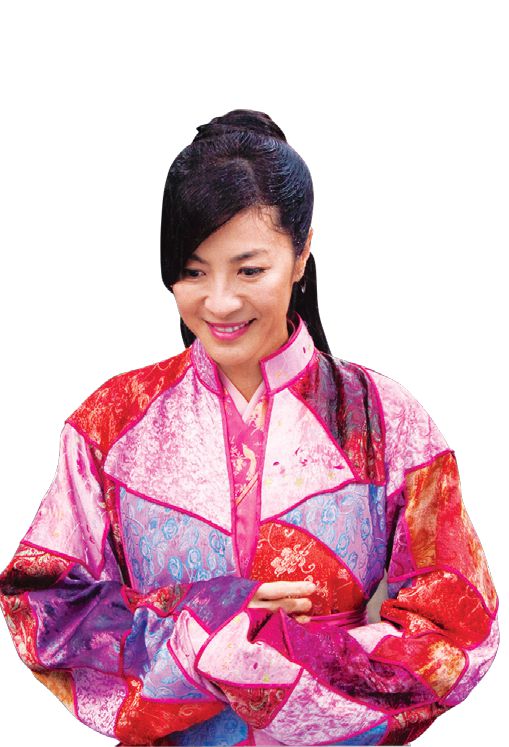
Other talented Perak-borns include Malaysian actress and songbird Amy Mastura and alternative musician, Ash Nair, who is also a budding actor in independent films.
Mouth-Watering Delicacies

For discerning gastronomes, Perak offers a wealth of culinary delights, guaranteed to assuage even the most demanding of palettes. One cannot visit the state without indulging in a cup of its quintessential beverage – Ipoh white coffee. Though adhering to the traditional black of the brew, it derives its name from the method in which the coffee-beans are roasted, in palm-oil margarine. The resulting brew is then stirred with a liberal dash of condensed milk, tempering the bitter black with creamy sweetness.

Sar Hor Fun is another iconic dish in which flat rice noodles are served in a fragrant chicken or seafood broth, flavoured with liberal servings of shredded chicken and prawn with a garnishing of spring onions. Also, for a lot of Malaysians, Ipoh is synonymous with Nga Choi Gai (Bean Sprouts Chicken), served either with rice cooked in chicken broth or noodles. The beansprouts are crisp and retain a flavourful crunch while the chicken is steamed to ensure a pliant, supple texture and the sealing in of its juices and flavours.
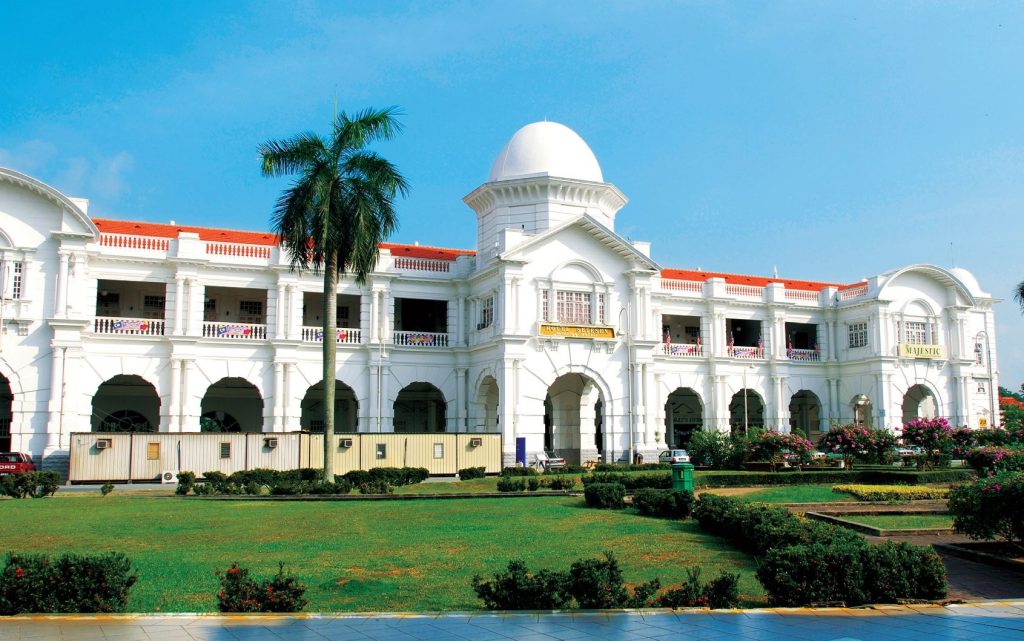
With a range of natural wonders and exciting cultural activities awaiting exploration, Perak remains one of Malaysia’s tourist mainstays, and a much-loved holiday destination for locals. From indulging in an array of sumptuous local cuisine to becoming immersed in the rich heritage evident in its architecture, those who visit The Land of Grace will never be short of things to do. As a natural and cultural paradise, Perak is a place unlike any other, where the timeless magic of a much-needed getaway will always hold sway.


